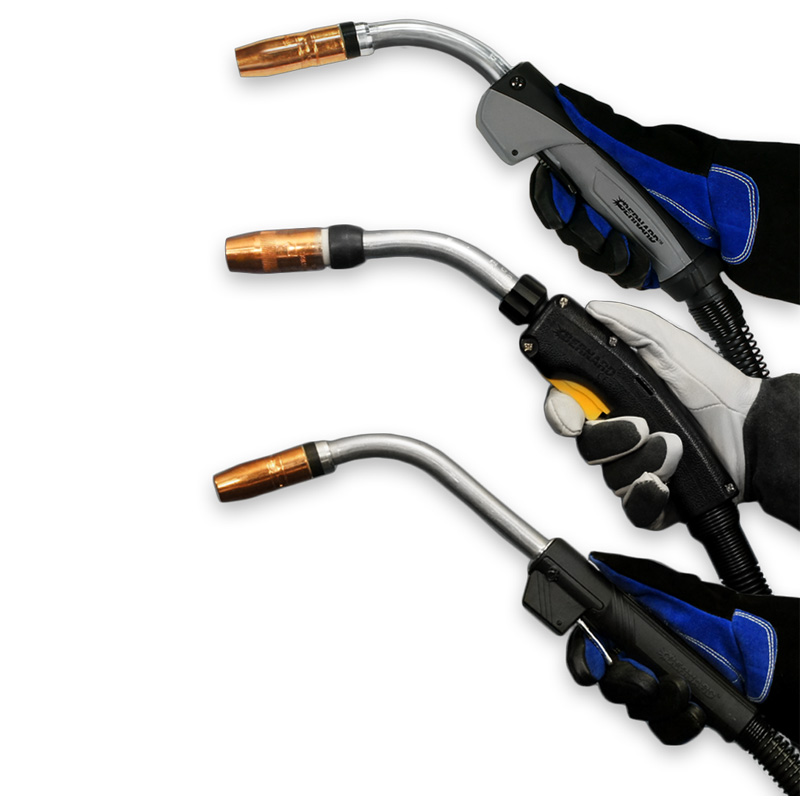Configuring a MIG Welding Gun for Your Application
Have you struggled to gain proper joint access when welding? Or found yourself fatigued at the end of the day because of repeatedly welding in awkward positions? Configuring a MIG welding gun can help.
Why configure?

A MIG welding gun configured for the exact application can maximize efficiency and productivity. When you are more comfortable, you are able to weld longer. A customized MIG welding gun also reduces downtime for assembly, since it’s ready right out of the box. You can configure each welding gun part with online configurators like those from Bernard. These parts include the:
- Cable
- Handle and trigger
- Neck type, angle and length
- Consumables
- Power pin
- Liner
How do you get started?
To configure the right MIG welding gun, look at the needs of your welding application. One answer influences the next choice.
- Determine the type and thickness of the base material on which you typically weld. This will dictate the welding wire selection and welding parameters, and in turn the amperage of MIG welding gun needed.
- Think about the expected arc-on time and length of the welds. Again, this impacts the amperage needed and also the duty cycle.
- Consider ergonomics. Decide what handle and neck style you prefer, as well as the cable length needed (shorter ones are lighter and easier to maneuver).
What affect does the weld cell have?
The physical space of the weld cell factors into MIG welding gun configuration. Consider these factors:
- If there are fixtures or jigs to work around, you may need narrower MIG welding consumables to access the joint.
- Space limitations and welding position impact cable length. Shorter cables are necessary for confined areas and are best for repetitive welding at a table since they are lighter. For out-of-position welds, a longer cable allows for greater movement (beware of coiling or kinking).
- The available workspace and joint access affect the length and bend angle of the gun neck you can use.
Taking the time to consider the factors that impact how you configure your MIG welding gun can go far in ensuring you have the exact one for your application.
See options for configuring a Bernard® MIG gun
This article is the first in a three-part series discussing how configuring a MIG gun can improve the welding operation, as well as what to consider in the process. Read article two, How to Choose Welding Gun Parts, and article three, Selecting the Right MIG Welding Consumables.


